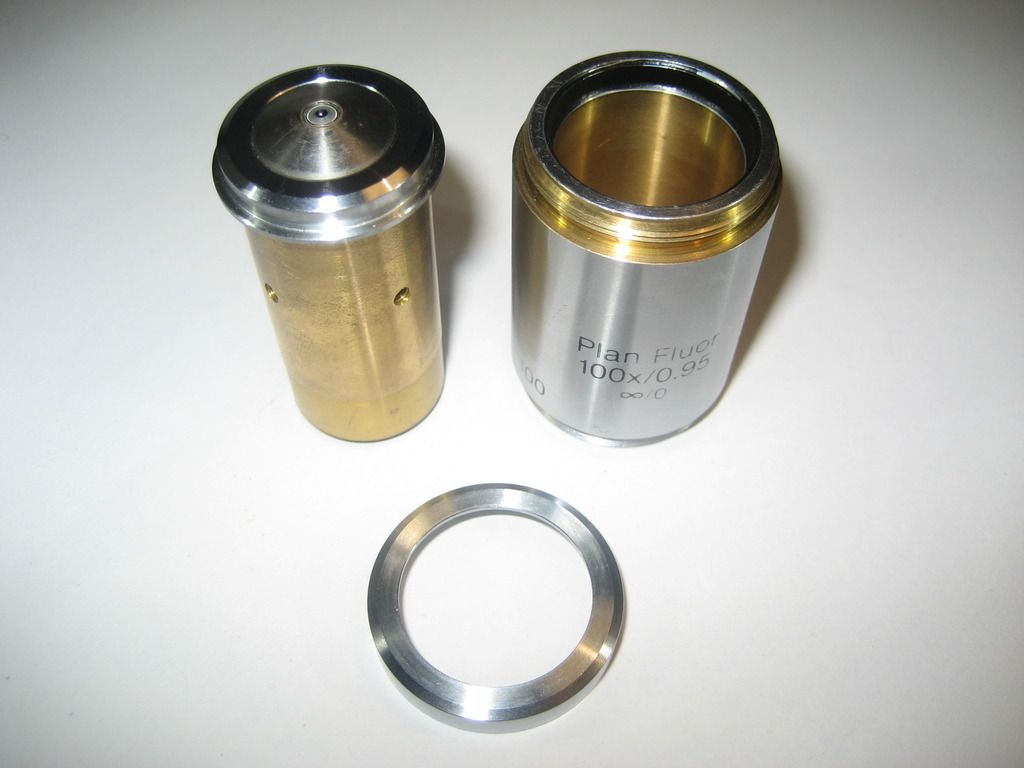Does anybody have any idea how to illuminate the subject if the following lens is used?

I have already tried with 3 COB-LEDs:

BTW, at the moment I’m constructing an adapter for the toslink cables to the flash.
BR, Adi
Moderators: rjlittlefield, ChrisR, Chris S., Pau


I would strongly consider a form of (modified) axial illumination through the objective, with a beam splitter at the rear of the objective. Since this is an infinity corrected objective, it should be possible to mount the beam splitter between objective and tube lens. This may be impossible if you are using the objective on a microscope (which is otherwise the logical choice at this magnification) and the microscope does not support axial illumination, but with a typical photomacrography setup or a microscope with axial illuminator it should work out.Adalbert wrote:Hello everybody,
Does anybody have any idea how to illuminate the subject if the following lens is used?
I have already tried with 3 COB-LEDs:
BTW, at the moment I’m constructing an adapter for the toslink cables to the flash.
BR, Adi
Not really COL, but what one would obtain by masking off most of the hollow cone of light and using only a narrow sector of the cone.Pau wrote:Enrico, what you propose is some kind of reflected COL, am I right? It seems a good idea to test.
More like method 2, but with a narrower beam of light that passes through one peripheral area of the objective, rather than through the whole objective. Because of the high NA of the lens, this beam would strike the subject obliquely, not along the lens axis, and therefore it would provide a directional shading of 3D features.Adalbert wrote: Enrico, do you mean something like the method 3 in:
http://www.photomacrography.net/forum/v ... ht&start=0
I don't know how collimated light that enter the optical fibers remains collimated after exiting the fibers. You might need collimating optics between the end of the fibers and the beam splitter.Adalbert wrote:Hello Enrico,
I could combine the method 2 with the toslink-cables.
So, the light-source would be the flash or LED and the light would be transferred by the toslink to the mirror.
BR, Adi
That seems too wide a cone to me. Ideally, a small planoconvex or biconvex lens with a focal length of not more than 15-20 mm, placed at the same distance from the exit of the fiber, should be enough as a collimator. Then a baffle with a 1-2 mm hole between lens and beam splitter should suffice to isolate a narrow beam of roughly parallel light to send to the beam splitter. Make the baffle mobile sideways, so that you can adjust its position until it gives the desired result.Pau wrote:It exits not collimated. IIRC the typical entrance (and exit) angle is 30deg. so the light cone is 60deg. but may vary with models